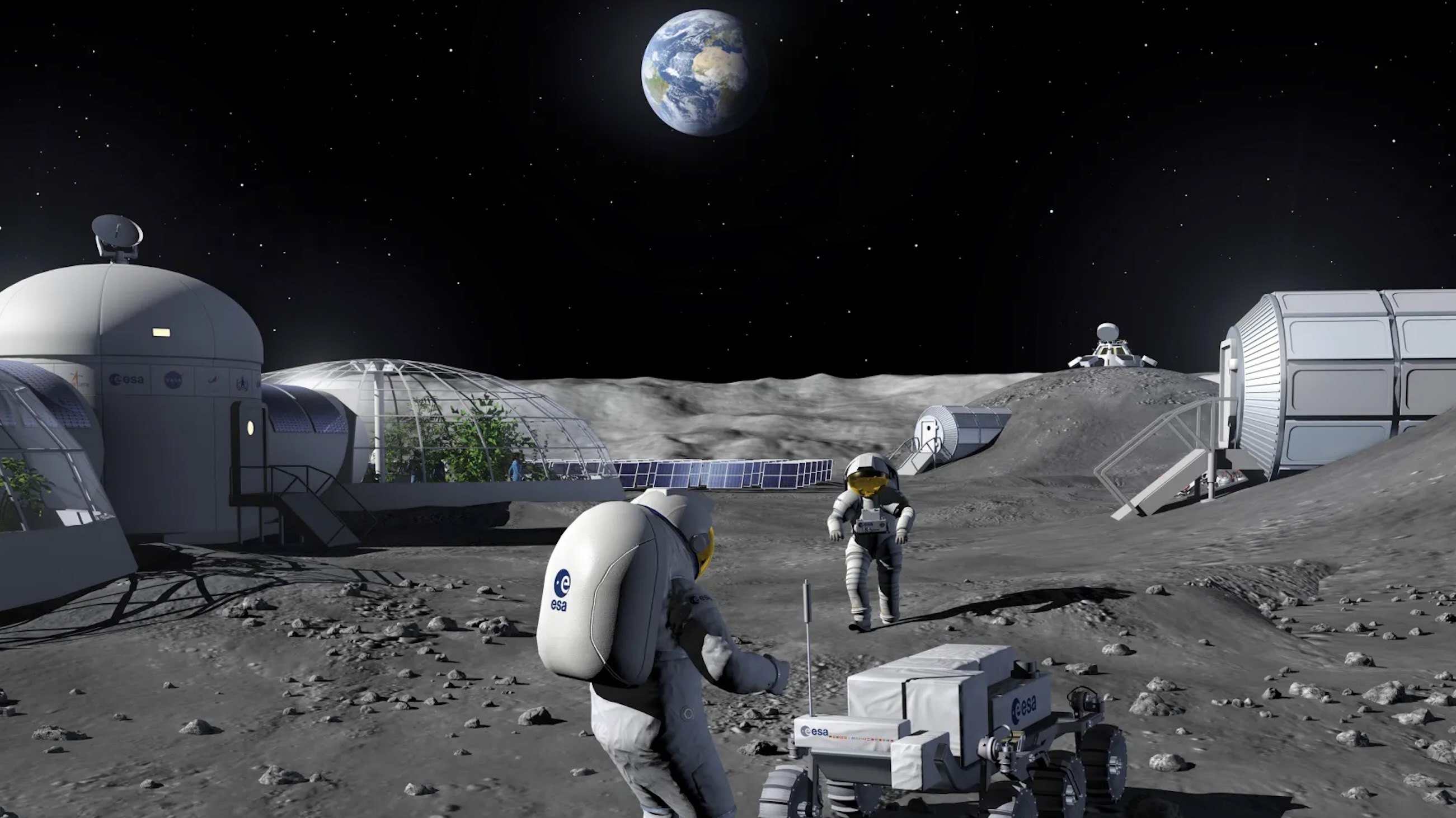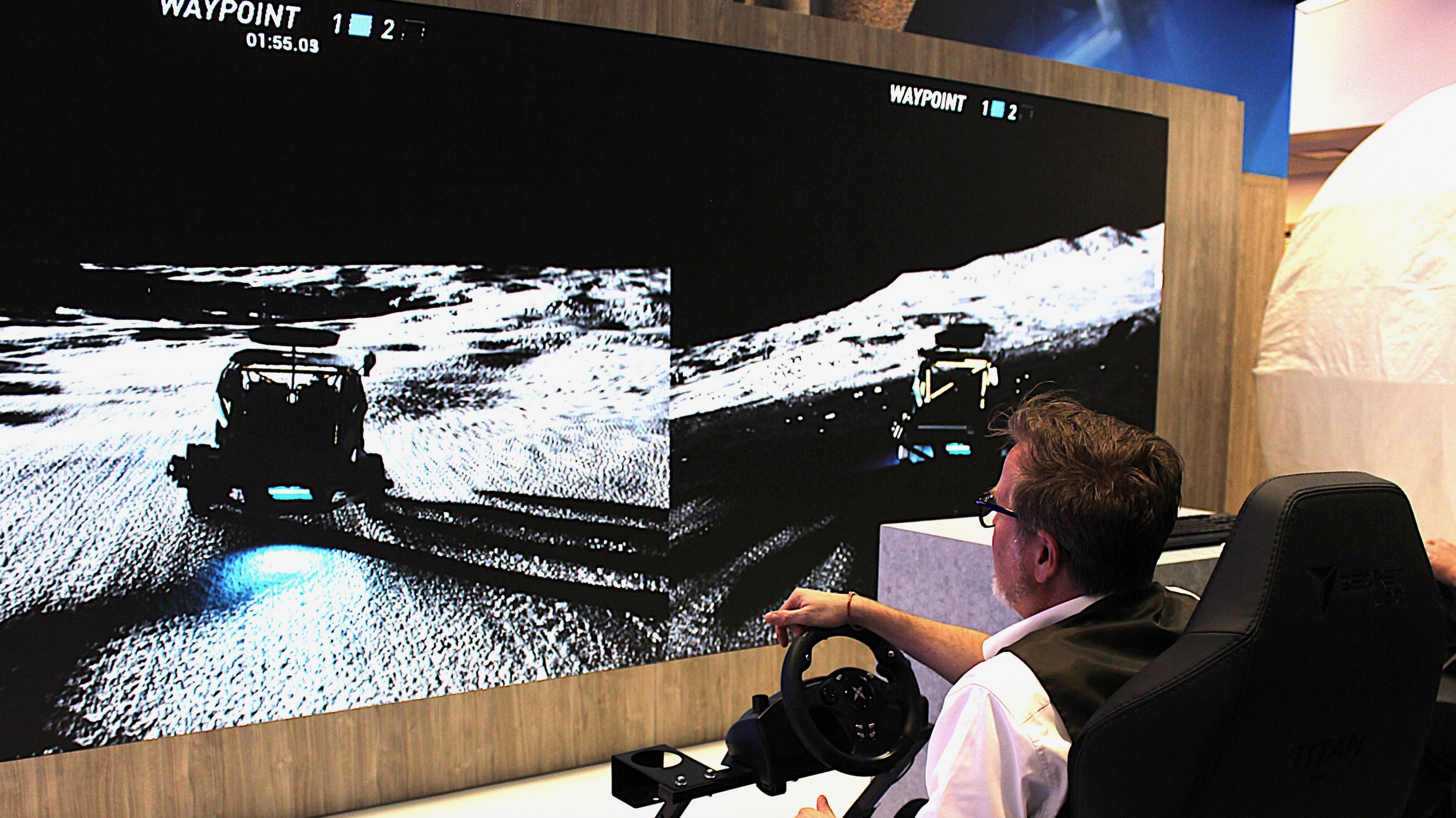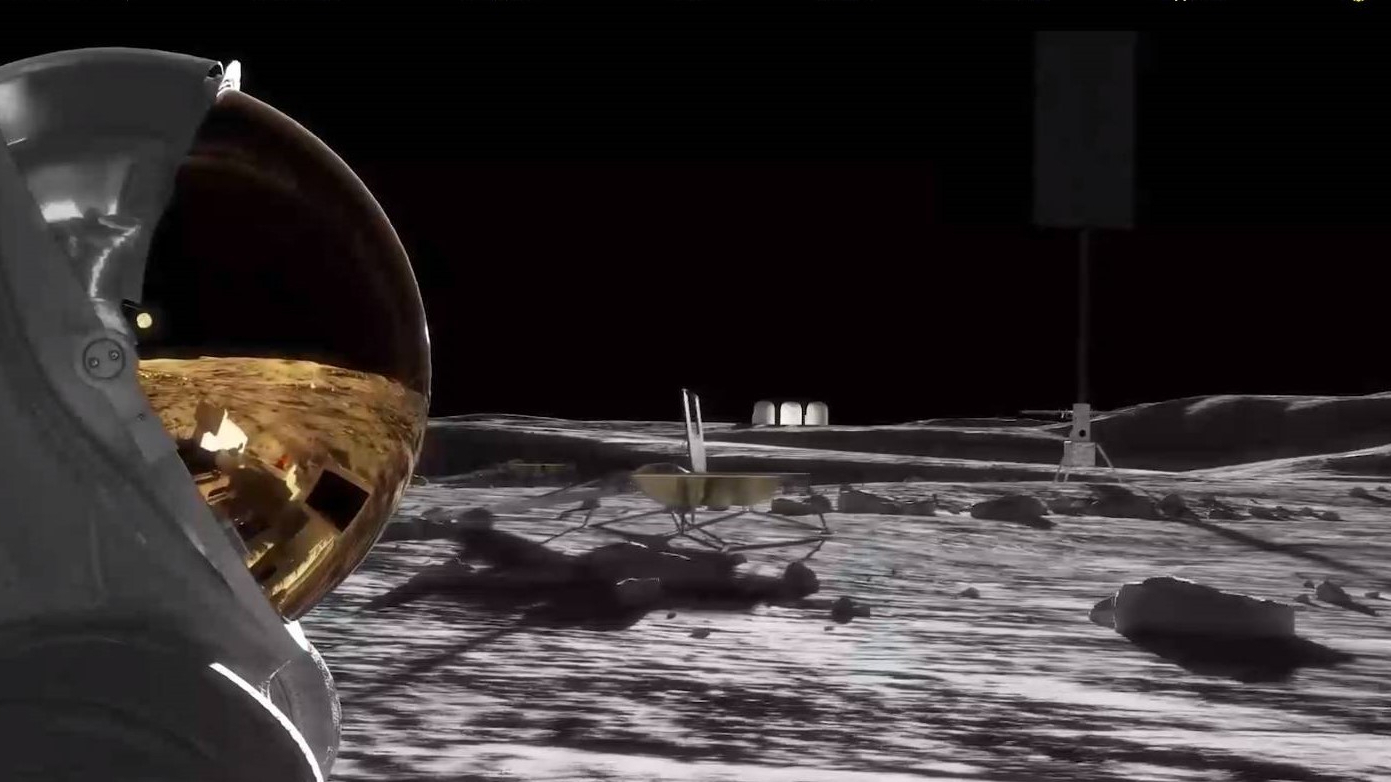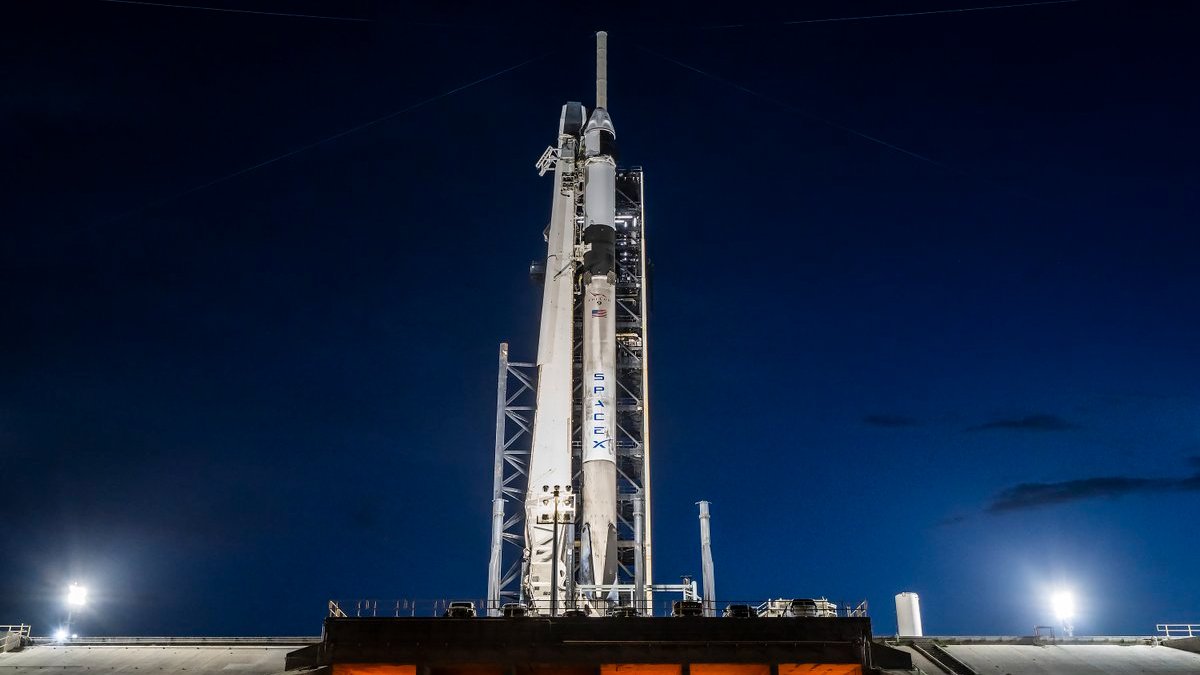
Can we actually build a thriving economy on and around the moon?
"I don't see an inner solar system in which we don't significantly develop the moon if you're going to go anywhere."

COLORADO SPRINGS, Colorado — Cashing in on a cislunar economy is ballyhooed by space exploration advocates.
Cislunar space — the region extending from our planet to the moon — is getting a lot of attention these days, as more and more spacecraft make their way to Earth's nearest neighbor. But what needs to happen to help spark a true cislunar economy? And, given actions of late here on Earth, are we headed for a tariff-free cislunar zone?
There's a lot of hard work ahead to put in place the needed hardware to sustain and define such a dollar-generating idea, experts say, but we at least have some ideas about how to get started.
Plug-in and play
It turns out that power allowing day-and-night operations on the moon — that is, "plug-in and play" lunar equipment — stands out as a must-have if humanity is to develop a real, rather than aspirational, cislunar economy.
The thought of cislunar space becoming a cash cow of the cosmos was heavily discussed during the Space Foundation's 40th Space Symposium, which was held here from April 7 to April 10 by the Space Foundation.
"I don't see an inner solar system in which we don't significantly develop the moon if you're going to go anywhere," said Rob Chambers, director of strategy for exploration at Lockheed Martin. "The basis of an economy has to be something that Earthlings will pay for."
Lockheed Martin is taking a visionary look at the building blocks of lunar infrastructure. For example, the company thinks that, by 2044, the moon could be abuzz with international research and commercial infrastructure, transforming its barren surface into a livable ecosystem.
Breaking space news, the latest updates on rocket launches, skywatching events and more!
You can take Lockheed's take on the infrastructure needed to maintain a permanent presence on the moon — near its south pole, which is thought to be rich in water ice — in this futuristic tour.

Lots of power
"We're focused on water and therefore hydrogen and oxygen propellants as the key product that is the base of the economy," Timothy Cichan, space exploration architect at Lockheed Martin, told Space.com.
"The big thing is power…lots of power," he said, as well as the mobility needed to source the water ice lying on the chilly, permanently shadowed floors of polar craters.
"Even in lunar nighttime, it's as close to cold as the permanently shadowed regions," Chambers explained. "You have to learn how to handle getting in and out of those thermal gradients. You have to be comfortable [with] operating in the nighttime in order to do productive things in the daytime."
The world's your oyster
So, do you design for cold or hot on the moon?
"You've got to design for both," Chambers said. "If you've got all the power you want, say hundreds of kilowatts, now you can optimize for something other than just survival."
If there's less than 85% continuous sunlight, he added, "our numbers say switch over to nuclear fission at that point. There are not that many places on the moon that have 85% sun. That, to us, says buckle up and get comfortable with nuclear fission. Once you've done that, now the world's your oyster."
Cichan pointed to the evolving nature of NASA's Artemis program, which aims to establish a permanent human presence on the moon in the coming years. Additionally, there's the space agency's footing of the bill for lander-carried experiments via its Commercial Lunar Payload Services (CLPS) initiative.
"NASA is making sure that we can evolve to an actual economy," said Cichan. "Nobody has closed a business case around that as yet, but we want to set up the infrastructure such that it is commercially operated, so that we can evolve to a place where there is a lunar economy. It's in a nascent form right now, very dependent on government dollars."

Chasm of capitalism
Cichan said that his message is, try to do things today to get prepared for the cislunar economy: "You have got to be there; otherwise, you're not part of the conversation."
Chambers labeled our current ability to make money in a cislunar economy as a "chasm of capitalism."
"I think there will be either a demand signal that the government says they will keep pouring in billions of dollars and they will buy power — for instance, writing a contract that has a guaranteed procurement with exit clauses if they don't. That's one way of getting through that chasm … assured government spending," Chambers said.
Another scenario, he said, is that the mining of helium-3 — a fuel for nuclear fusion reactors — on the moon turns out to be a viable business, and then people will pour in money. "History has shown that humans figure out how to make money anywhere."
Circular lunar economy
Michael Nayak is a program manager with the U.S. Defense Advanced Research Projects Agency (DARPA). He's leading DARPA's 10-Year Lunar Architecture (LunA-10) Capability Study.
At the symposium, Nayak spotlighted what's needed within the next decade to establish an era of interoperable lunar infrastructure, which could spur a fully functioning lunar economy.
"Today, the lunar economy has mining as its center. But in order for that to scale, we need megawatts of power," he said. In fact, Nayak would bet on a power company to be in the top five of a "lunar Fortune 50" business listing.
In second place is heat rejection and generation as a commercial service, Nayak predicted, "especially in the wildly fluctuating temperatures of the moon."
How does it scale?
Of like mind is Jamie Porter, director of the Lunar Surface Innovation Consortium managed by The Johns Hopkins University Applied Physics Laboratory in Laurel, Maryland.
"If you don't have power, you just can't do anything. You need it to be able to move forward," Porter told the Space Symposium gathering.
"At DARPA, we are simply interested in big risks," Nayak said. The hard question that quickly emerged early in the LunA-10 study, he added, was, "How does it scale?" That is, how can we move beyond prototype lunar hardware to industry infrastructure and an actual lunar economy?
"Power and thermal are absolutely critical," said Nayak. "The third thing is, where should we go [on the moon] if commercial industry is the point? Where are the specific locations with 'reserves' that are sufficiently deep that I can build an end-to-end economic model around?"
Join our Space Forums to keep talking space on the latest missions, night sky and more! And if you have a news tip, correction or comment, let us know at: community@space.com.

Leonard David is an award-winning space journalist who has been reporting on space activities for more than 50 years. Currently writing as Space.com's Space Insider Columnist among his other projects, Leonard has authored numerous books on space exploration, Mars missions and more, with his latest being "Moon Rush: The New Space Race" published in 2019 by National Geographic. He also wrote "Mars: Our Future on the Red Planet" released in 2016 by National Geographic. Leonard has served as a correspondent for SpaceNews, Scientific American and Aerospace America for the AIAA. He has received many awards, including the first Ordway Award for Sustained Excellence in Spaceflight History in 2015 at the AAS Wernher von Braun Memorial Symposium. You can find out Leonard's latest project at his website and on Twitter.
You must confirm your public display name before commenting
Please logout and then login again, you will then be prompted to enter your display name.
